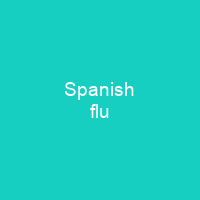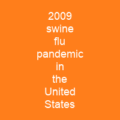The Spanish flu pandemic lasted from February 1918 to April 1920. It infected 500 million people, about a third of the world’s population. The death toll is typically estimated to have been somewhere between 17 million and 50 million, and possibly as high as 100 million. Malnourishment, overcrowded medical camps and hospitals, and poor hygiene, all exacerbated by the recent war, promoted bacterial superinfection.
About Spanish flu in brief

By 11 March 1918, the virus had reached Queens, New York. It reached India, North Africa, Japan in May, and soon after there had been recorded cases in Southeast Asia in April. After the signing of the Brest-Litovsk Treaty, Germany started releasing Russian prisoners of war, who then brought the disease to their country. In Senegal it was named ‘the Brazilian flu’, and in Brazil ‘the German flu’, while in Poland it was known as ‘the Bolshevik disease’ Today, however, ‘Spanish flu’ is the most widely used name for the Pandemic in Spain. It then spread to the rest of France, Italy, Spain and Spain and in Great Britain. After an outbreak in China in June, it was reported in June and July 1918 that the disease had likely gone around the world as far as Southeast Asia and Southeast Asia. The first observations of illness and mortality were documented in the United States, France, Germany, and the United Kingdom. To maintain morale, World War I censors minimized these early reports. Newspapers were free to report the epidemic’s effects in neutral Spain, such as the grave illness of King Alfonso XIII, and these stories created a false impression of Spain as especially hard hit. This gave rise to the name \”Spanish flu. Historical and epidemiological data are inadequate to identify with certainty the pandemia’s geographic origin, with varying views as to its location.
You want to know more about Spanish flu?
This page is based on the article Spanish flu published in Wikipedia (as of Dec. 19, 2020) and was automatically summarized using artificial intelligence.







